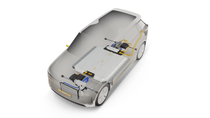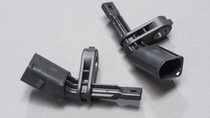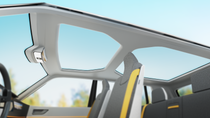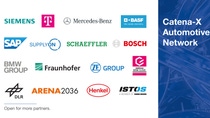Automotive
Plastics for safe and comfortable automotive electrics and electronics
Engineering Plastics and Polyurethanes from BASF enable innovative solutions for automotive electrics and electronics. Both material groups are indispensable when it comes to safety, comfort and energy efficiency in modern vehicle concepts. Innovation in automotive design is significantly driven by electrical, electronic and mechatronic systems. Recent driver assistance systems, networked and electric mobility will accelerate this development even further.
Stories & more
» Applications
Versatile E&E applications for the automotive
From fuse boxes to modern power electronics - there is hardly an electrical application that does not rely on plastics. Where electricity flows, our Engineering Plastics and Polyurethanes show outstanding electrical as well as good mechanical properties and a high dimensional stability under heat.
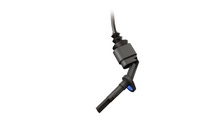
Sensors
Like sensitive electronic components, sensors have to withstand high temperatures in all climate zones worldwide. Besides eMobility, automated driving is gaining importance and sensors are key components for the performance. As sensors are asked to play a greater role, the challenges for these sensors in ADAS will continue to increase. Tailor-made Engineering Plastics, like Ultradur® RX, are resistant to media like spray water, oils or road salt while they are able to block or transmit radar waves from other vehicles.
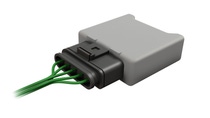
Control units
The electronic control unit housings have to protect the sensitive automotive electronics and have to be functional in all climate zones on earth. This includes hot damp conditions, spray water and road salt which increases the requirements on the plastic. Therefore, the level and duration of the stress are key factors as to whether or not an application is feasible. Ultradur® HR is the ideal choice for performance in challenging environments.
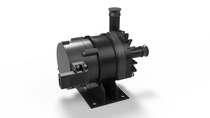
Motors and actuators
With the increasing use of actuators, such as in seat control, automatic light controlling or door locks, the comfort for the driver is also growing. Due to miniaturization and functionalization of components, actuators are becoming smaller and more complex, which demands a high mechanical performance of materials such as Ultraform®, Ultradur® or Ultramid® Advanced from BASF. They convince with high dimensional stability, wear resistance and are optimized for complex components in actuators.
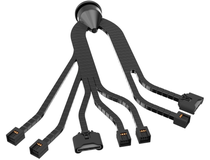
Cable Management
Speed sensor cables for ABS and ESP systems use outer-sheathings of Elastollan® to provide a secure flow of information – even in the area of the wheel house, close to the axle, which is at risk of impact from stones and exposure to water, vibration and low temperatures. BASF thermoplastic polyurethane is also used for charging cables as flame retardant material.
A cable harness is typically limp and has to be transformed into a specific, three-dimensional, pre-formed geometry using aids – for example cable conduits or tape. With Elastofoam®, the foaming of the application gives more flexibility, provides mechanical protection and the integration of mounting elements is possible.
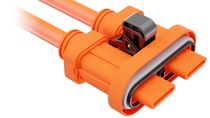
High-voltage connectors
High-voltage connectors can be most often identified by their typical orange color. The light-colorable Ultradur® is color stable and resistant to thermal aging. The color coding of the individual components is safety-relevant: It needs to remain highly visible for at least ten years. While being part of the non-halogenated flame-retardant portfolio, the BASF polybutylene terephthalate (PBT) as well offers high hydrolytic resistance and excellent electrical insulation (CTI 600).
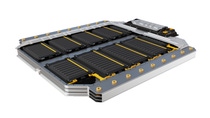
eMobility
Your eMobility ambitions begin with BASF, the world’s #1 chemical supplier for the automotive industry. Backed by our decades of engineering expertise and built with superior eMobility Performance Materials, your applications will meet the highest standards for safety, durability, and mechanical performance. Enjoy the freedom to design trend-setting eMobility innovations as we partner with you to drive a truly sustainable future. When you rely on BASF’s broad portfolio of Performance Materials for your eMobility applications, you’ll gain the advantage of a unique co-creation partnership.
Get inspired
Detailed material information for E&E solutions
» Engineering Plastics
Engineering Plastics
In automotive electrics, extremely high requirements such as resistance to media and weathering as well as heat ageing resistance have to be fulfilled. From the simple fuse box to modern power electronics - there is hardly an electrical application that does not rely on plastics. In fact, through Engineering Plastics these applications have often become safe and economical. Where electricity flows, our materials show outstanding electrical as well as good mechanical properties and a high dimensional stability under heat. They guarantee electrical insulation and a high heat deflection. Engineering plastics can reduce fire risk in the event of an electrical defect or exposure to external sources of ignition.
» Polyurethanes
Our versatile PU systems for E&E applications
With their versatile properties and unlimited application possibilities, our PU systems can make the automotive electronics safer and more reliable. BASF polyurethanes like the soft integral foam Elastofoam® and the thermoplastic polyurethane (TPU) Elastollan® enable modern and reliable E&E applications.
Consult with an expert
Self-service solutions:

